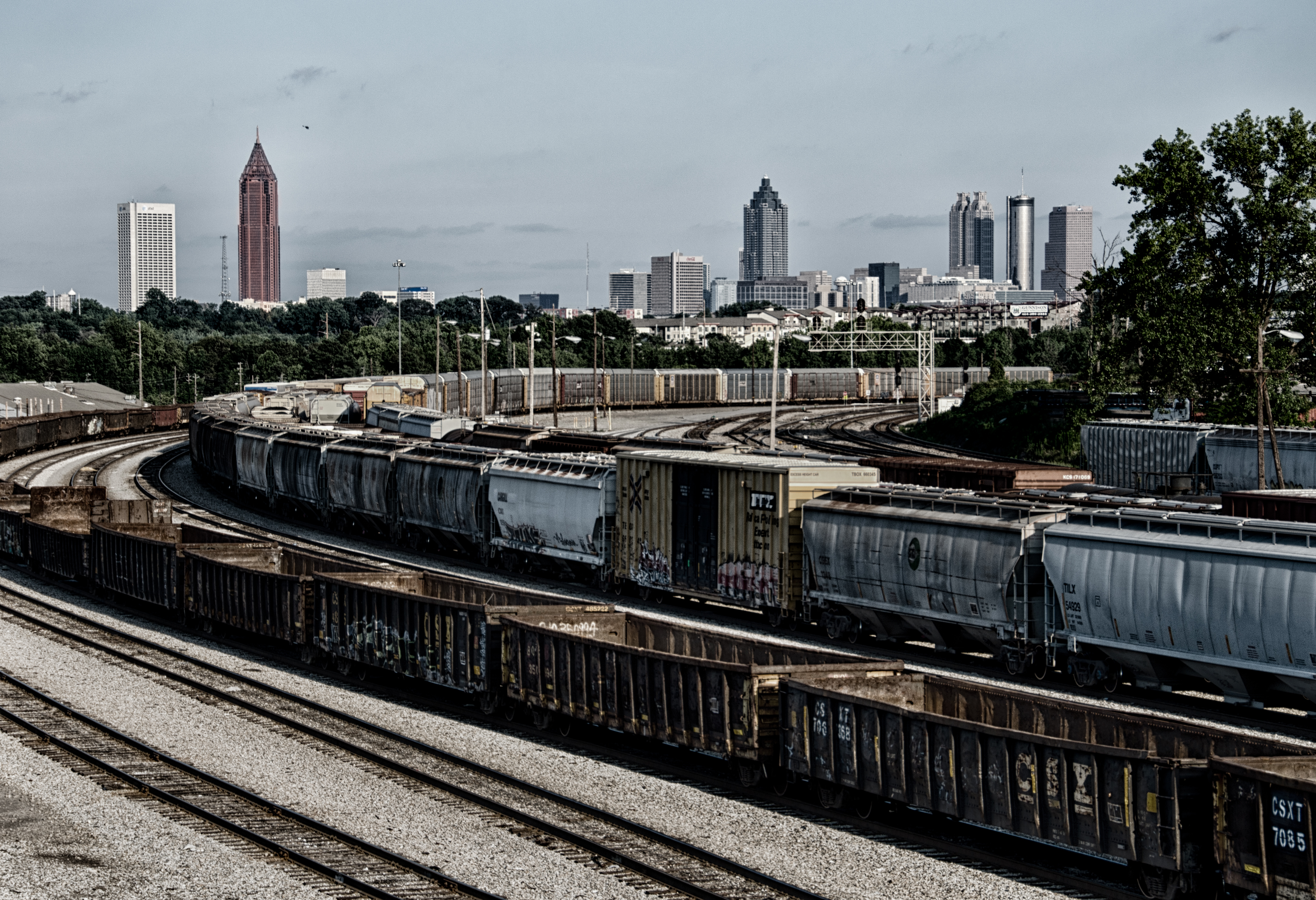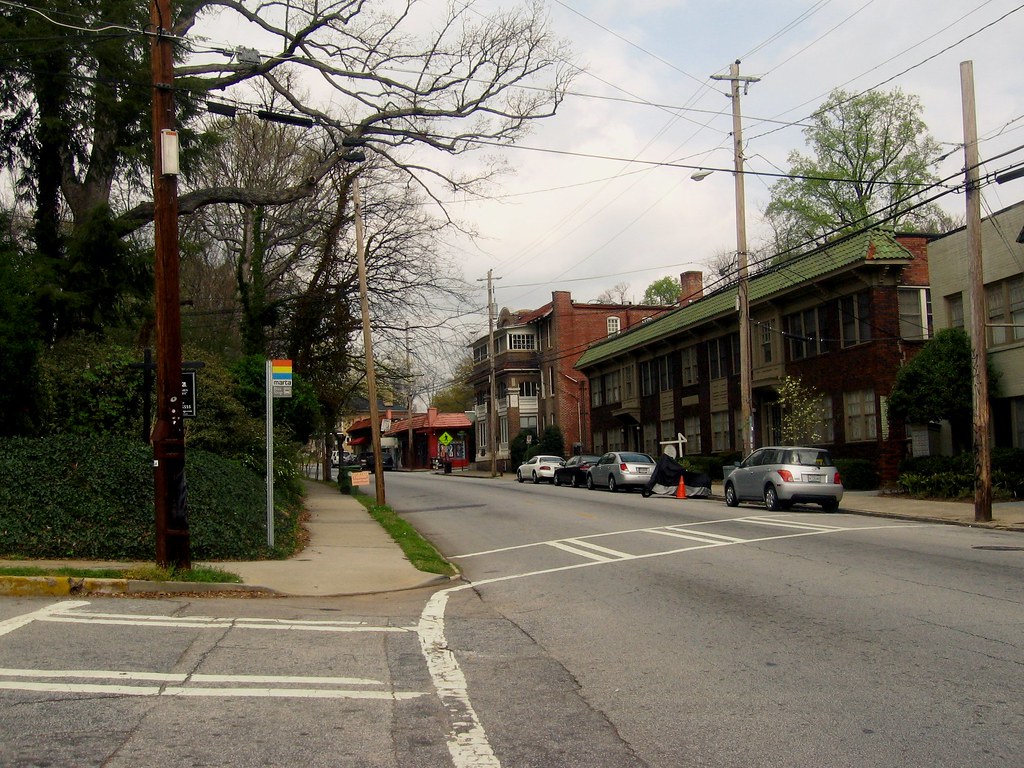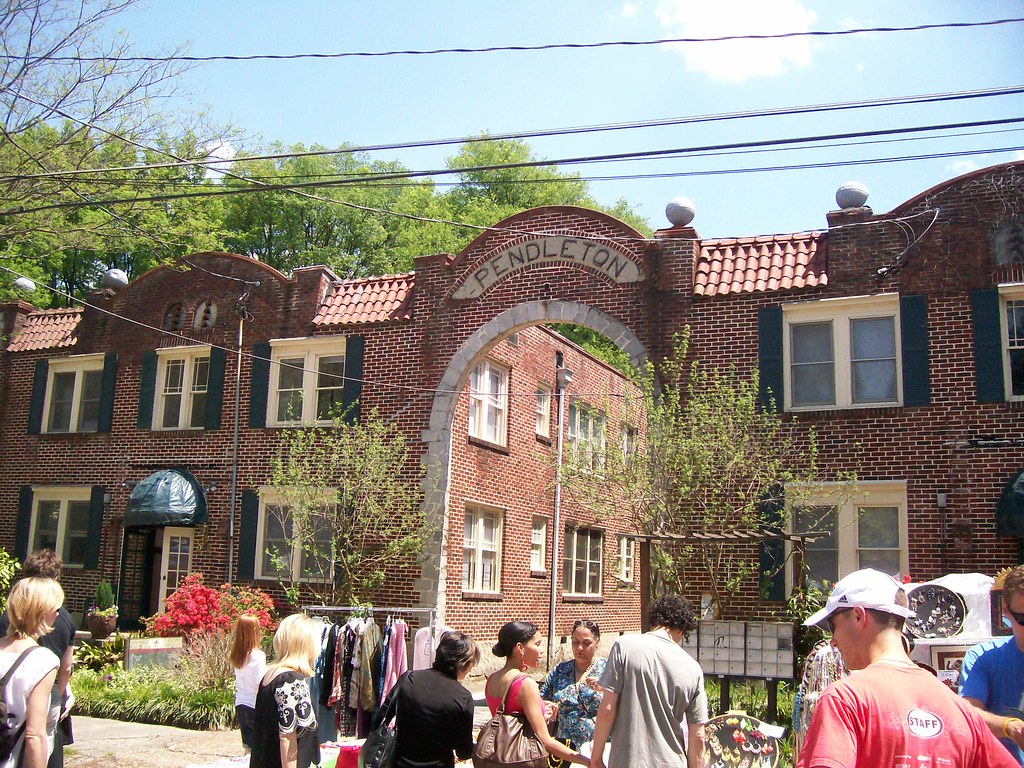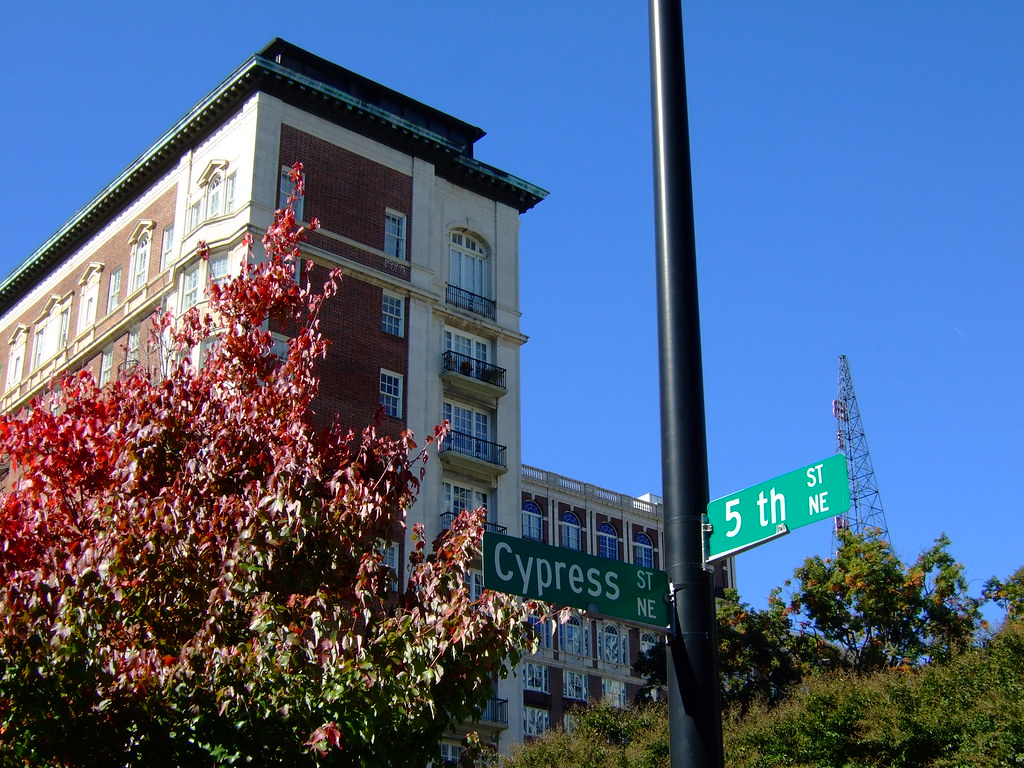Quote:
Originally Posted by DJDeadParrot

I can't totally disagree with the OP; there seems to be no conscious awareness of the city's history. Of course Atlanta has history; nobody is literally saying it doesn't have history because, perhaps, it was created out of nothing when this thread started.
Atlanta owes its existence to railroads, but you hardly see any of those railroads now, much less the ones still serving Atlanta. Many of the places pointed out by the poster on page 2 don't exist anymore. For example, Union Station has had three incarnations. Sure, the first one was burned by an invading army. The second one? There's a parking deck there now. The third one built a couple of blocks away? Razed to build Underground Atlanta. Terminal Station? That was razed at nearly the same time as the last Union Station. BTW, how many of you would know where Terminal Station was without looking it up?
I'm not suggesting that the city's history is erased when these buildings no longer exist. Rather, the city's tangible history is no longer tangible, and becomes little more than a story.
|
Actually I believe there's a general lack of knowledge more than anything. If someone doesn't know Atlanta history it's not possible to recognize it. It can be right in someone face it doesn't matter.. So the bigger is issue are you aware of why a area is historic and it's age?
For instance you know Atlanta owe its existence to the railroad. To answer your question the Terminal Station would be near the "gulch" on the westside of Downtown. But What do we know about the westside? it's full of warehouses. But they aren't just warehouses they are victorian and early 20 century warehouses. These areas are national historic districts
Castleberry Hill - Wikipedia, the free encyclopedia
Marietta Street Artery - Wikipedia, the free encyclopedia
Knight Park-Howell Station - Wikipedia, the free encyclopedia
Means Street Historic District - Wikipedia, the free encyclopedia
Southern Railway North Avenue Yards Historic District - Wikipedia, the free encyclopedia
 http://farm9.staticflickr.com/8145/7...1d0738df_o.jpg
http://farm9.staticflickr.com/8145/7...1d0738df_o.jpg
Through out the Westside and also other parts of the city there warehouse and factories are being turned into lofts..
 http://www.pbase.com/lsyd/image/142934534/original.jpg
http://www.pbase.com/lsyd/image/142934534/original.jpg
Castleberry Hill,
 http://www.pbase.com/lsyd/image/142934617/original.jpg
http://www.pbase.com/lsyd/image/142934617/original.jpg
Also lets not forget what the Beltline comes from...
 http://4.bp.blogspot.com/-bv-iReqZwp...ltcabg9712.jpg
http://4.bp.blogspot.com/-bv-iReqZwp...ltcabg9712.jpg
These are National historic places that not inside a larger historic district.
63 Magnum Street Industrial Building
Atlanta Spring and Bed Company--Block Candy Company
Atlanta Waterworks Hemphill Avenue Station
Atlanta and West Point Railroad Freight Depot
Bass Furniture Building
Coca-Cola Building Annex
Cooledge, F. J., and Sons, Company--Hastings' Seed Company
Dixie Coca-Cola Bottling Company Plant
Empire Manufacturing Company Building
Ford Motor Company Assembly Plant
General Electric Company Repair Shop Warehouse
Great Atlantic & Pacific Tea Company
King Plow Company
Orr, J. K., Shoe Company
Peachtree Southern Railway Station
Selig Company Building
Southern Bell Telephone Company Building
Southern Belting Company Building
Southern Spring Bed Company
Trio Steam Laundry
Troy Peerless Laundry Building
63 Magnum Street Industrial Building
But it's not just the warehouses, mills and rail lines that are like 80 to 150 years..
Apartments at 22-24 Collier Road
Apartments at 2 Collier Road
Atlanta Biltmore Hotel and Biltmore Apartments
705 Piedmont Avenue Apartments
61 16th Street Apartment Building
Briarcliff Hotel
Canton Apartments
Cox--Carlton Hotel
Crescent Apartments
Davis, H.B., Building--Hotel Roxy
Garrison Apartments
Imperial Hotel
Knox Apartments, Cauthorn House and Peachtree Road Apartments Historic District
Palmer House and Phelan House Apartments
Piedmont Park Apartments
St. Andrews Apartments
Tyree Building
61 16th Street Apartment Building
 http://farm3.staticflickr.com/2384/2...d11d9176_b.jpg
http://farm3.staticflickr.com/2384/2...d11d9176_b.jpg
 http://farm3.staticflickr.com/2696/4...f1117fe8_b.jpg
http://farm3.staticflickr.com/2696/4...f1117fe8_b.jpg
 http://farm4.staticflickr.com/3140/2...0ebcb77d_b.jpg
http://farm4.staticflickr.com/3140/2...0ebcb77d_b.jpg
 http://farm2.static.flickr.com/1120/...e5d38f07_b.jpg
http://farm2.static.flickr.com/1120/...e5d38f07_b.jpg
Atlanta has over 30+ historic district, here are just a few...
Adair Park Historic District
Architectural Style: Queen Anne, Late Gothic Revival
Area of Significance: Community Planning And Development, Architecture
Period of Significance: 1925-1949, 1900-1924,
1875-1899
Historic Function: Commerce/Trade, Domestic, Education, Landscape, Religion
Historic Sub-function: Multiple Dwelling, Park, Religious Structure, School, Single Dwelling
Ansley Park Historic District
Architectural Style: Late 19th And Early 20th Century American Movements, Late 19th And 20th Century Revivals, Queen Anne
Area of Significance: Architecture, Landscape Architecture, Community Planning And Development
Period of Significance: 1925-1949,
1900-1924
Historic Function: Domestic
Historic Sub-function: Single Dwelling
Atkins Park District
Architectural Style: Colonial Revival, Bungalow/Craftsman, Tudor Revival
Area of Significance: Architecture, Landscape Architecture, Community Planning And Development
Period of Significance: 1925-1949,
1900-1924
Cabbagetown District
Architectural Style: Romanesque, Bungalow/Craftsman, Late Victorian
Area of Significance: Industry, Architecture, Community Planning And Development, Commerce
Period of Significance:
1875-1899
Historic Function: Commerce/Trade, Domestic, Industry/Processing/Extraction
Historic Sub-function: Business, Manufacturing Facility, Single Dwelling
Fairlie-Poplar Historic District
Architectural Style: Other, Chicago, Art Deco
Area of Significance: Architecture, Commerce
Period of Significance: 1900-1924,
1875-1899
Historic Function: Commerce/Trade, Government
Historic Sub-function: Business, City Hall
Grant Park Historic District
Architectural Style: Bungalow/Craftsman, Italianate, Queen Anne
Area of Significance: Historic - Non-Aboriginal, Architecture, Landscape Architecture, Military, Community Planning And Development
Cultural Affiliation: American
Period of Significance: 1925-1949, 1900-1924, 1875-1899,
1850-1874
Grant Park North
Architectural Style: Queen Anne, Stick/Eastlake, Late Victorian
Area of Significance: Community Planning And Development, Architecture
Period of Significance: 1925-1949, 1900-1924,
1875-1899
Historic Function: Domestic
Historic Sub-function: Single Dwelling
Hotel Row Historic District
Architectural Style: Early Commercial
Area of Significance: Commerce, Transportation, Architecture
Period of Significance: 1925-1949, 1900-1924,
1875-1899
Historic Function: Commerce/Trade, Domestic, Social
Historic Sub-function: Business, Hotel, Meeting Hall
Inman Park
Architectural Style: Shingle Style, Colonial Revival, Queen Anne
Historic Person: Hurt,Joel
Significant Year: 1889
Area of Significance: Architecture, Community Planning And Development, Landscape Architecture
Period of Significance: 1900-1924,
1875-1899
Inman Park--Moreland Historic District
Architectural Style: Bungalow/Craftsman, Colonial Revival, Beaux Arts
Area of Significance: Architecture, Commerce
Period of Significance: 1925-1949, 1900-1924, 1875-1899,
1850-1874
Historic Function: Commerce/Trade, Domestic
Historic Sub-function: Multiple Dwelling, Single Dwelling
Peachtree Commons
Architectural Style: Colonial Revival
Area of Significance: Community Planning And Development, Architecture
Period of Significance: 1925-1949,
1900-1924
Historic Function: Domestic
Historic Sub-function: Multiple Dwelling, Single Dwelling
Midtown Historic District
rchitectural Style: Queen Anne, Bungalow/Craftsman
Area of Significance: Architecture, Community Planning And Development
Period of Significance: 1925-1949, 1900-1924,
1875-1899
Historic Function: Commerce/Trade, Domestic, Education, Religion
Historic Sub-function: Multiple Dwelling, Religious Structure, School, Single Dwelling, Specialty Store
Peachtree Highlands Historic District
Architectural Style: Bungalow/Craftsman, Other, Colonial Revival
Area of Significance: Architecture, Community Planning And Development, Social History
Period of Significance: 1925-1949,
1900-1924
Historic Function: Domestic
Historic Sub-function: Single Dwelling
Reynoldstown Historic District
Architectural Style: Colonial Revival, Romanesque
Area of Significance: Social History, Community Planning And Development, Black, Architecture
Period of Significance: 1950-1974, 1925-1949, 1900-1924, 1875-1899,
1850-1874
Historic Function: Commerce/Trade, Domestic, Industry/Processing/Extraction, Religion, Transportation
Historic Sub-function: Department Store, Manufacturing Facility, Multiple Dwelling, Rail-Related, Religious Structure, Single Dwelling, Specialty Store
Sweet Auburn Historic District
Area of Significance: Economics, Black, Commerce, Social History
Period of Significance: 1925-1949, 1900-1924, 1875-1899,
1850-1874
Historic Function: Commerce/Trade, Domestic, Social
Historic Sub-function: Business, Civic, Professional, Single Dwelling
The "New South" is a Atlanta coined term. but here's what people miss... that was like in the 1870's.
Gilded Age - Wikipedia, the free encyclopedia
The New South is historic itself. What leaders meant then was a southern industrial city. Then it was a new concept! The industrial cities was a midwestern thing.. New Orleans, Charleston, louisville and etc aren't industrial cities. Chicago, St Louis, Detroit, Pittsburgh Cleveland, Youngstown, and many other smaller midwestern cities are Atlanta and Birmingham Gilded Age peers.
Sweet Auburn
 http://farm5.static.flickr.com/4064/...9c997e69_b.jpg
http://farm5.static.flickr.com/4064/...9c997e69_b.jpg
Cabbagetown
 http://www.pbase.com/lsyd/image/142934577/original.jpg
http://www.pbase.com/lsyd/image/142934577/original.jpg
By 1910 Atlanta was the 3rd largest the city in the South only Louisville and New Orleans was larger.
I strongly believe the reason Atlanta history is not acknowledged because it's overshadow with Atlanta being a Sunbelt city now. It's conflicting to what a sunbelt city suppose to be. Charlotte, Nashville, Raleigh, Orlando, Tampa, Miami and other southeastern cities are not Gilded Age cities associating with industry. Birmingham is associated with history but it's not a booming sunbelt city either. Atlanta is still the rail hub of the southeast. But Atlanta diverse up even before the decline of manufacturing. So people don't associate Atlanta with that background even though it's Atlanta history.
Otherwise Atlanta present is booming like Charlotte, but historically ATL was booming like Cleveland.
 http://www.brianculler.com/images/di...MG_0059-lg.jpg
http://www.brianculler.com/images/di...MG_0059-lg.jpg

 Please register to participate in our discussions with 2 million other members - it's free and quick! Some forums can only be seen by registered members. After you create your account, you'll be able to customize options and access all our 15,000 new posts/day with fewer ads.
Please register to participate in our discussions with 2 million other members - it's free and quick! Some forums can only be seen by registered members. After you create your account, you'll be able to customize options and access all our 15,000 new posts/day with fewer ads.